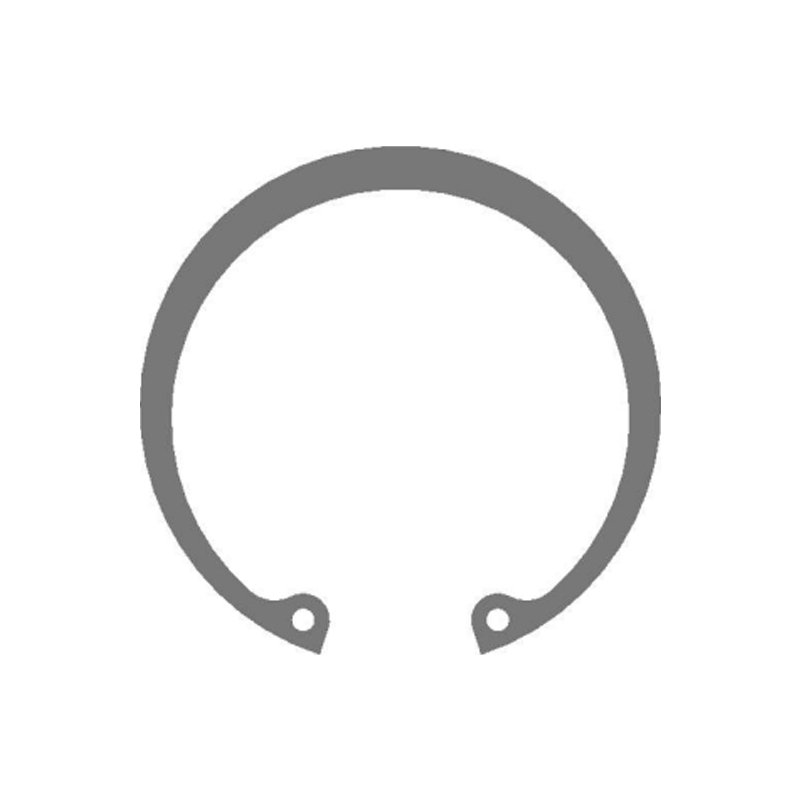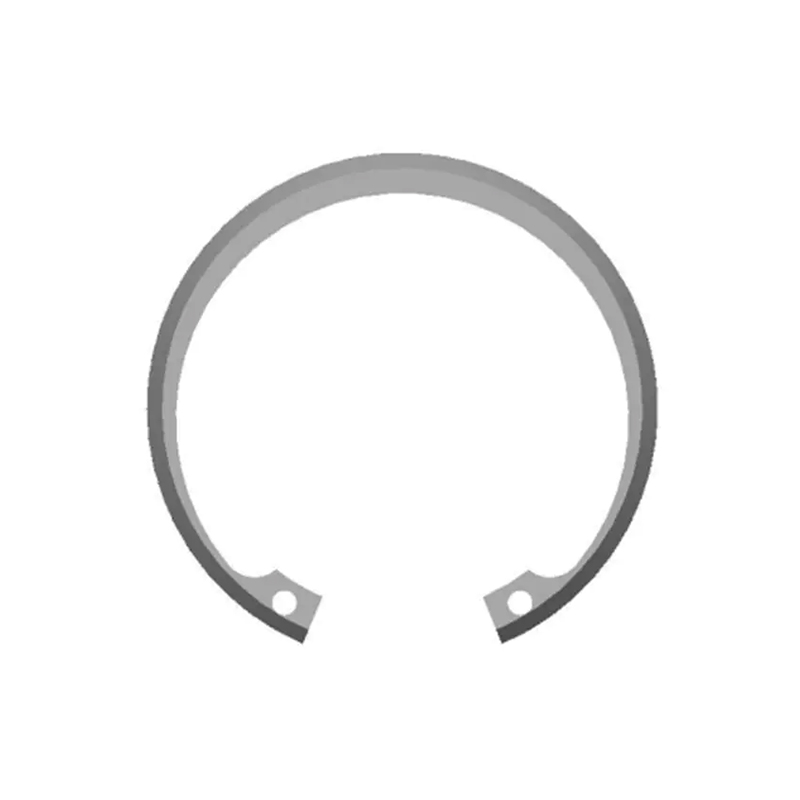Stainless steel circlips, also known as retaining rings or snap rings, are crucial components in mechanical assemblies, providing secure axial positioning for shafts, bearings, and other rotating parts. In applications where high stress or vibration is present — such as automotive drivetrains, industrial machinery, and aerospace components — understanding their performance characteristics is essential for reliability and safety.
1. Key Properties of Stainless Steel Circlips
Stainless steel circlips are designed to combine strength, corrosion resistance, and elasticity:
- High tensile strength: Stainless steel provides robust resistance against deformation and axial displacement, ensuring components stay securely in place.
- Elasticity and spring-back: Circlips rely on elastic deformation to snap into grooves and maintain a secure fit. High-quality stainless steel maintains this elasticity under repeated load cycles.
- Corrosion resistance: Stainless steel resists rust and chemical degradation, which is critical in harsh environments where moisture, oils, or chemicals are present.
These properties allow stainless steel circlips to perform effectively under demanding conditions.
2. Performance Under High-Stress Conditions
High-stress environments subject circlips to axial forces, torque, or pressure that can potentially deform or dislodge them. Stainless steel circlips are engineered to withstand such stress due to:
- Material strength: The alloy composition and heat treatment of stainless steel provide high yield strength, preventing permanent deformation under heavy loads.
- Precise groove fit: Properly sized grooves and tolerance-controlled circlips distribute stress evenly, reducing localized strain that could lead to failure.
- Fatigue resistance: Stainless steel circlips can endure repeated loading and unloading cycles, which is essential in machinery where components move frequently.
When correctly specified for the application, stainless steel circlips maintain axial retention and prevent unwanted movement of shafts, bearings, or other components, even under continuous high loads.
3. Performance Under High-Vibration Conditions
Vibration can loosen or fatigue components in mechanical assemblies. Stainless steel circlips address these challenges through:
- Secure snap-fit: Circlips are designed to spring into the groove and maintain a tight grip, resisting axial movement caused by vibrations.
- Elastic energy absorption: The elasticity of stainless steel allows circlips to absorb minor oscillations without losing their grip or deforming permanently.
- Resistance to fretting and wear: High-quality stainless steel circlips resist micro-movement wear that can occur under vibration, preserving groove integrity over time.
Applications in automotive engines, gearboxes, and industrial motors frequently experience vibrations, and stainless steel circlips provide a reliable solution to maintain component alignment and prevent catastrophic failures.

4. Factors Affecting Circlip Performance
Several factors influence how well stainless steel circlips perform in demanding environments:
- Material grade: Different stainless steel alloys (e.g., 301, 304, 316) offer varying combinations of strength, hardness, and corrosion resistance. Choosing the appropriate grade is critical.
- Design and tolerances: Groove dimensions, circlip thickness, and diameter tolerances must match precisely to ensure secure retention.
- Surface finish: Smooth finishes reduce stress concentrations and minimize wear under vibration.
- Operating conditions: Temperature extremes, chemical exposure, and cyclic loads affect longevity. High-temperature stainless alloys may be required for extreme applications.
- Installation: Proper use of snap-ring pliers and correct orientation ensures the circlip seats fully in the groove, maximizing performance under stress and vibration.
5. Applications Requiring High-Stress and High-Vibration Performance
Stainless steel circlips are widely used in industries where high stress and vibration are prevalent:
- Automotive and Transportation: Securing transmission shafts, wheel bearings, and suspension components.
- Industrial Machinery: Retaining bearings, gears, and rotary components in motors, pumps, and conveyors.
- Aerospace: High-reliability applications where vibration and cyclic loads are extreme.
- Marine and Offshore Equipment: Corrosion-resistant circlips maintain integrity under vibration and saltwater exposure.
6. Maintenance and Best Practices
Even high-quality stainless steel circlips require proper handling and maintenance to ensure reliable performance:
- Regular inspections: Check for signs of wear, deformation, or corrosion, especially in high-vibration environments.
- Replacement intervals: Components subjected to continuous high stress or vibration may need periodic replacement to prevent fatigue-related failure.
- Correct installation: Avoid overstretching, bending, or misaligning circlips during assembly.
Conclusion
Stainless steel circlips are engineered to perform reliably under high-stress and high-vibration conditions, combining strength, elasticity, and corrosion resistance. Their ability to maintain axial retention, absorb oscillations, and resist fatigue makes them essential components in automotive, industrial, aerospace, and marine applications. Selecting the correct material grade, size, and installation method ensures that stainless steel circlips provide long-term durability and performance, even in the most demanding mechanical environments.

















